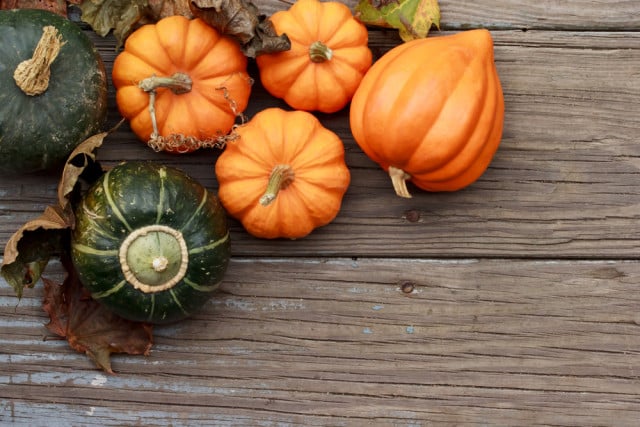Pasta with pumpkin (pasta e cocozza in Neapolitan) is a recipe commonly found all over Italy, but especially in Naples – where this recipe comes from – and Southern Italy
In fact, it's the quintessential recipe from the Neapolitan “cucina povera” tradition: a few simple ingredients, cooked in one pot (in Italian this is called a minestra), but packing in a lot of flavour.
READ ALSO: Silvana's ten golden rules for cooking pasta like the Italians
Minestre (plural) are the most typical winter food in Italy. They started as vegetable soups, to which stale bread was added to both soak up the broth and bulk up the meal.
As pasta became more democratic (as it was for many centuries the food of the rich) thanks to industrialization and mass production, the bread was slowly replaced by pasta, and this tasty minestra has taken on the form we know today.
Ingredients:
-
300 gr egg-free farfalle pasta (or other short pasta of your choice)
-
500 gr pumpkin (weighed with seeds and skin)
-
4 garlic cloves
-
1 liter of water or vegetable stock
-
4 tbsps extra-virgin olive oil
-
A handful of chopped parsley
-
A pinch of shredded chili pepper (optional)
-
Salt and pepper to taste

Photo: Depositphotos
Method:
First you need to clean the pumpkin: slice it open, and with a spoon scrape away all the seeds. Then, with a large knife, remove the skin. Be careful, as the skin is very hard: you’ll have a much easier time by tackling a thin slice at the time. Once the pumpkin is clean, dice it in small cubes of about 1 cm.
-
In a very large, thick-bottomed pan, add the extra-virgin olive oil, the crushed garlic, andthe chili pepper if usng. Turn on the heat very low, and let cook for a few minutes, taking care that the garlic doesn’t burn. TIP: to add more flavour, add the parsley stems (without the leaves) tied up in a bunch with food-grade string, and remove them before adding the pumpkin. Lots of flavour guaranteed.
-
Add the diced pumpkin, and saute for a few minutes, stirring so the oil coats evenly all the cubes.
-
Add about 200ml of water, allow to boil, then cover the pan and lower the heat. Leave to simmer for 10-15 minutes. Stir occasionally to make sure that the pumpkin is not sticking to the bottom, and that there’s enough water.
-
Boil one liter of water (or vegetable stock, if preferred) and add 300 ml of it to the pot. Season with salt and pepper Stir in the pasta and, if necessary add more water or stock. Cook for 6-7 minutes, then taste to make sure that the pasta is cooked al dente and the seasoning to your taste.. Don’t be tempted to add too much water, just add if its been comletely absorbed and the pasta is not cooked yet. Pasta with pumpkin is ready when the pasta is cooked al dente and covered uniformly with the creamy pumpkin sauce, and there’s no water left
-
Remove from the heat, stir in the chopped parsley and serve with grated Parmesan

Silvana Lanzetta. Photo: Private
Silvana Lanzetta was born into a family of pasta makers from Naples and spent 17 years as a part-time apprentice in her grandmother’s pasta factory. She specializes in making pasta entirely by hand and runs regular classes and workshops in London.
Find out more at her website, Pastartist.com, including this recipe and others.




 Please whitelist us to continue reading.
Please whitelist us to continue reading.
Member comments